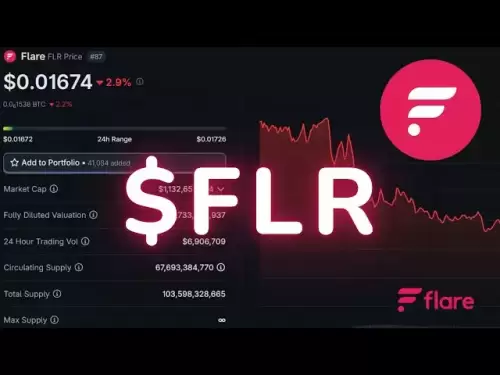-
 Bitcoin
Bitcoin $108,017.2353
-0.81% -
 Ethereum
Ethereum $2,512.4118
-1.58% -
 Tether USDt
Tether USDt $1.0002
-0.03% -
 XRP
XRP $2.2174
-1.03% -
 BNB
BNB $654.8304
-0.79% -
 Solana
Solana $147.9384
-1.76% -
 USDC
USDC $1.0000
-0.01% -
 TRON
TRON $0.2841
-0.76% -
 Dogecoin
Dogecoin $0.1636
-2.09% -
 Cardano
Cardano $0.5726
-1.72% -
 Hyperliquid
Hyperliquid $39.1934
1.09% -
 Sui
Sui $2.9091
-0.59% -
 Bitcoin Cash
Bitcoin Cash $482.1305
0.00% -
 Chainlink
Chainlink $13.1729
-1.54% -
 UNUS SED LEO
UNUS SED LEO $9.0243
-0.18% -
 Avalanche
Avalanche $17.8018
-1.90% -
 Stellar
Stellar $0.2363
-1.69% -
 Toncoin
Toncoin $2.7388
-3.03% -
 Shiba Inu
Shiba Inu $0.0...01141
-1.71% -
 Litecoin
Litecoin $86.3646
-1.98% -
 Hedera
Hedera $0.1546
-0.80% -
 Monero
Monero $311.8554
-1.96% -
 Dai
Dai $1.0000
-0.01% -
 Polkadot
Polkadot $3.3473
-2.69% -
 Ethena USDe
Ethena USDe $1.0001
-0.01% -
 Bitget Token
Bitget Token $4.3982
-1.56% -
 Uniswap
Uniswap $6.9541
-5.35% -
 Aave
Aave $271.7716
0.96% -
 Pepe
Pepe $0.0...09662
-1.44% -
 Pi
Pi $0.4609
-4.93%
Is it cost-effective to transfer XRP across borders? What are the advantages compared with other currencies?
XRP offers cost-effective cross-border transfers with low fees and rapid settlement, outshining traditional banking and other cryptocurrencies in speed and scalability.
Apr 28, 2025 at 06:36 pm

Is it cost-effective to transfer XRP across borders? What are the advantages compared with other currencies?
Transferring XRP across borders can be highly cost-effective due to its design and the infrastructure supporting it. XRP, the native cryptocurrency of the Ripple network, was specifically created to facilitate fast and low-cost international money transfers. This article will explore the cost-effectiveness of transferring XRP across borders and compare its advantages to other currencies.
Cost-Effectiveness of XRP Transfers
XRP transactions are known for their low fees. Unlike traditional banking systems, which can charge hefty fees for international transfers, XRP transactions typically cost a fraction of a cent. This is because the Ripple network uses a decentralized ledger to process transactions, which significantly reduces the overhead costs associated with traditional financial intermediaries.
The speed of XRP transfers also contributes to their cost-effectiveness. Traditional bank transfers can take several days to complete, often requiring multiple intermediaries, which increases costs. In contrast, XRP transactions can be settled in seconds, regardless of the amount or the countries involved. This rapid settlement time minimizes the need for costly holding periods and reduces the risk of currency fluctuations, which can add to the overall cost of traditional transfers.
The scalability of the Ripple network further enhances the cost-effectiveness of XRP transfers. The network can handle a high volume of transactions per second, which means that even during peak times, the cost per transaction remains low. This scalability is a significant advantage over other cryptocurrencies and traditional banking systems, which can become more expensive as transaction volumes increase.
Advantages of XRP Compared to Other Currencies
XRP offers several advantages over traditional fiat currencies when it comes to international transfers. One of the primary advantages is the elimination of intermediary banks. Traditional international transfers often involve multiple banks, each taking a cut of the transaction. With XRP, the need for these intermediaries is removed, resulting in lower costs and faster transaction times.
Compared to other cryptocurrencies, XRP has a unique advantage in its focus on facilitating international payments. While other cryptocurrencies like Bitcoin and Ethereum are primarily seen as investment vehicles or platforms for decentralized applications, XRP is specifically designed for cross-border transfers. This focus allows XRP to offer more tailored solutions for businesses and financial institutions looking to move money across borders.
Another advantage of XRP is its liquidity. The Ripple network works with a variety of financial institutions and liquidity providers, which ensures that there is always a market for XRP. This high liquidity means that businesses and individuals can convert their XRP to other currencies quickly and at a favorable rate, further enhancing the cost-effectiveness of using XRP for international transfers.
The regulatory compliance of the Ripple network also sets XRP apart from other cryptocurrencies. Ripple has made significant efforts to work within existing financial regulations, which makes XRP more attractive to banks and financial institutions. This compliance can lead to more widespread adoption of XRP for international transfers, further driving down costs and increasing efficiency.
Practical Example of Transferring XRP
To illustrate the cost-effectiveness and ease of transferring XRP across borders, let's walk through a practical example. Suppose you want to send $1,000 from the United States to Japan.
First, you need to convert your dollars to XRP. You can do this through a cryptocurrency exchange that supports XRP, such as Binance or Coinbase. Let's assume the exchange rate is 1 USD = 0.5 XRP, so you would need to buy 500 XRP.
Next, you send the XRP to the recipient's XRP wallet. This can be done directly through the exchange or by transferring the XRP to your own wallet and then sending it from there. The transaction fee on the Ripple network is typically around 0.00001 XRP, which is negligible.
Finally, the recipient converts the XRP back to Japanese yen. They can do this through another cryptocurrency exchange that operates in Japan. Assuming the exchange rate is 1 XRP = 110 JPY, the recipient would receive 55,000 JPY.
This example demonstrates how transferring XRP can be both cost-effective and straightforward. The total cost of the transaction, including exchange fees and the XRP transaction fee, would likely be less than 1% of the total amount transferred, which is significantly lower than the fees charged by traditional banking systems.
Factors to Consider When Using XRP for International Transfers
While XRP offers many advantages for international transfers, there are several factors to consider before using it. One factor is the volatility of cryptocurrency markets. The value of XRP can fluctuate significantly, which could impact the amount of money received by the recipient. To mitigate this risk, it's advisable to convert the XRP to the recipient's local currency as quickly as possible.
Another factor to consider is the regulatory environment in the countries involved in the transfer. While Ripple has made efforts to comply with regulations, the legal status of cryptocurrencies can vary widely from one country to another. It's important to check the regulations in both the sending and receiving countries to ensure that using XRP for international transfers is legal and feasible.
Security is also a crucial consideration. As with any cryptocurrency, it's essential to use secure wallets and exchanges to protect your XRP from theft or hacking. It's recommended to use hardware wallets for storing larger amounts of XRP and to enable two-factor authentication on any exchanges or wallets you use.
Real-World Applications of XRP for International Transfers
Several financial institutions have already begun using XRP for international transfers. For example, MoneyGram, a leading money transfer company, has partnered with Ripple to use XRP for its cross-border payment services. This partnership allows MoneyGram to settle transactions more quickly and at a lower cost, which benefits both the company and its customers.
Another example is the use of XRP by banks in the RippleNet network. RippleNet is a global network of financial institutions that use Ripple's technology to facilitate international payments. Banks in this network can use XRP to settle transactions instantly, which can significantly reduce the time and cost associated with traditional international transfers.
These real-world applications demonstrate the practical benefits of using XRP for international transfers. By leveraging the speed, low cost, and scalability of the Ripple network, businesses and financial institutions can offer more efficient and cost-effective services to their customers.
Frequently Asked Questions
1. Can XRP be used for personal transfers, or is it only suitable for businesses?
XRP can be used for both personal and business transfers. While it's often used by financial institutions for large-scale international payments, individuals can also use XRP to send money across borders. The process is similar to the example provided earlier, where an individual converts their local currency to XRP, sends it to the recipient, and the recipient converts it back to their local currency.
2. How does the volatility of XRP affect its use for international transfers?
The volatility of XRP can impact the amount of money received by the recipient if the value of XRP changes significantly between the time of the initial conversion and the final conversion. To minimize this risk, it's advisable to convert the XRP to the recipient's local currency as quickly as possible after the transfer is complete.
3. Are there any countries where XRP transfers are not allowed?
The legal status of XRP and other cryptocurrencies can vary from one country to another. Some countries have strict regulations or outright bans on cryptocurrency transactions. It's important to check the regulations in both the sending and receiving countries before using XRP for international transfers.
4. What are the security risks associated with using XRP for international transfers?
As with any cryptocurrency, there are security risks associated with using XRP. These include the risk of hacking or theft if the XRP is stored in an insecure wallet or exchange. To mitigate these risks, it's recommended to use hardware wallets for storing larger amounts of XRP and to enable two-factor authentication on any exchanges or wallets you use.
Disclaimer:info@kdj.com
The information provided is not trading advice. kdj.com does not assume any responsibility for any investments made based on the information provided in this article. Cryptocurrencies are highly volatile and it is highly recommended that you invest with caution after thorough research!
If you believe that the content used on this website infringes your copyright, please contact us immediately (info@kdj.com) and we will delete it promptly.
- Bitcoin, Kiyosaki, and Acquisition: A Perfect Storm?
- 2025-07-05 22:35:14
- Cardano vs. Solana: The $500 Dream and a Payments Disruptor
- 2025-07-05 22:50:13
- Subway Surfers on PC: Level Up Your Experience, No Train Ticket Needed!
- 2025-07-05 22:35:14
- Ray Dalio, Bitcoin, and Disruptions: Navigating the Future of Finance
- 2025-07-05 23:10:13
- Yu Darvish's Padres Return: A Coin Flip?
- 2025-07-05 22:50:13
- Undead Blocks Rises Again: Avalanche Blockchain, Blackhole Partnership, and a Roadmap to 2026
- 2025-07-05 22:55:12
Related knowledge
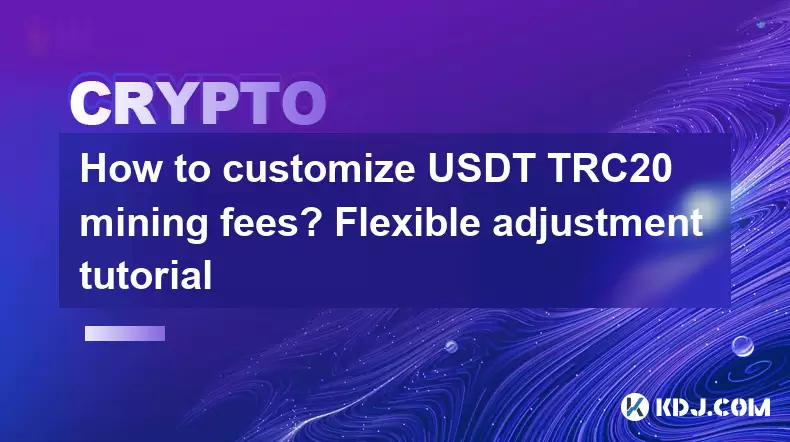
How to customize USDT TRC20 mining fees? Flexible adjustment tutorial
Jun 13,2025 at 01:42am
Understanding USDT TRC20 Mining FeesMining fees on the TRON (TRC20) network are essential for processing transactions. Unlike Bitcoin or Ethereum, where miners directly validate transactions, TRON uses a delegated proof-of-stake (DPoS) mechanism. However, users still need to pay bandwidth and energy fees, which are collectively referred to as 'mining fe...
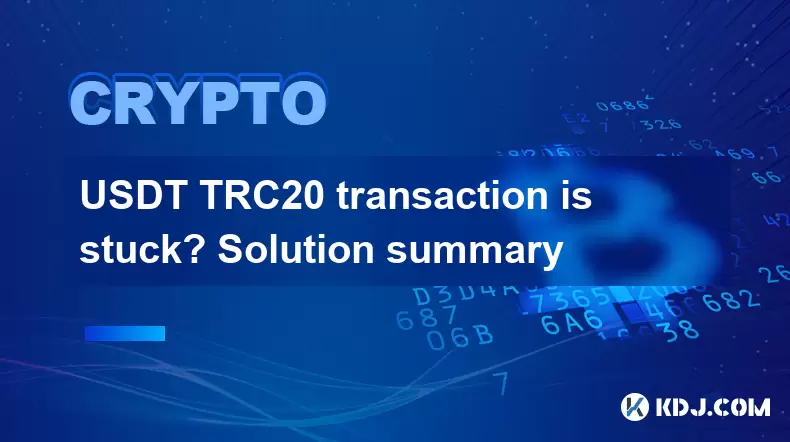
USDT TRC20 transaction is stuck? Solution summary
Jun 14,2025 at 11:15pm
Understanding USDT TRC20 TransactionsWhen users mention that a USDT TRC20 transaction is stuck, they typically refer to a situation where the transfer of Tether (USDT) on the TRON blockchain has not been confirmed for an extended period. This issue may arise due to various reasons such as network congestion, insufficient transaction fees, or wallet-rela...
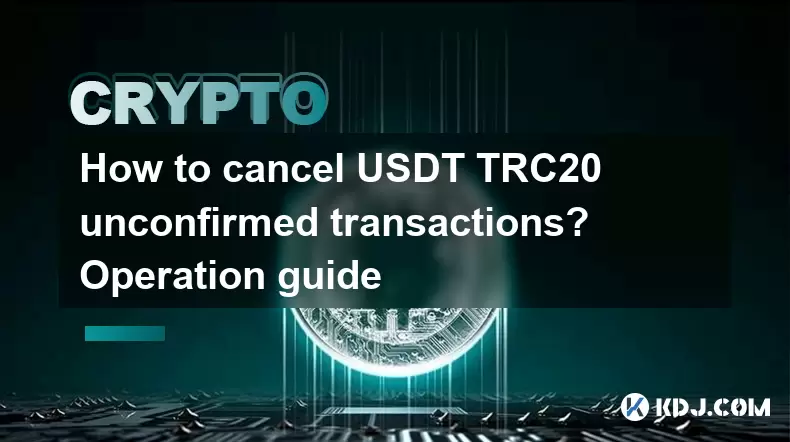
How to cancel USDT TRC20 unconfirmed transactions? Operation guide
Jun 13,2025 at 11:01pm
Understanding USDT TRC20 Unconfirmed TransactionsWhen dealing with USDT TRC20 transactions, it’s crucial to understand what an unconfirmed transaction means. An unconfirmed transaction is one that has been broadcasted to the blockchain network but hasn’t yet been included in a block. This typically occurs due to low transaction fees or network congestio...
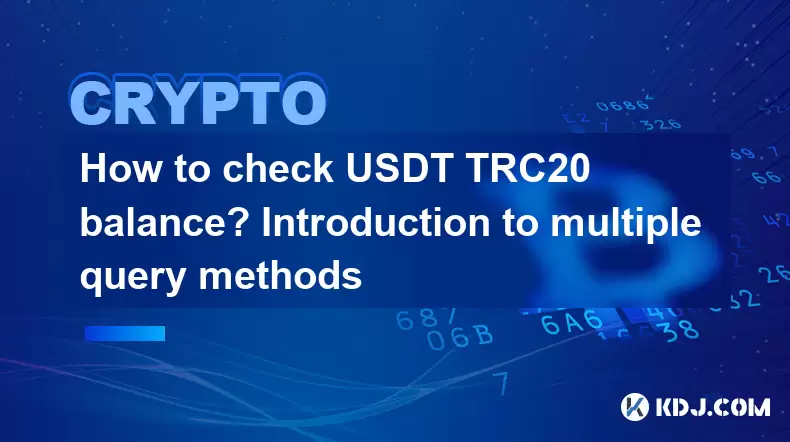
How to check USDT TRC20 balance? Introduction to multiple query methods
Jun 21,2025 at 02:42am
Understanding USDT TRC20 and Its ImportanceUSDT (Tether) is one of the most widely used stablecoins in the cryptocurrency market. It exists on multiple blockchain networks, including TRC20, which operates on the Tron (TRX) network. Checking your USDT TRC20 balance accurately is crucial for users who hold or transact with this asset. Whether you're sendi...
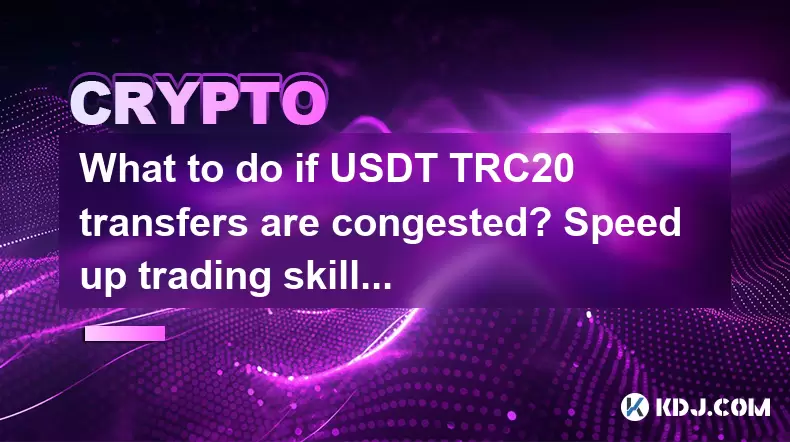
What to do if USDT TRC20 transfers are congested? Speed up trading skills
Jun 13,2025 at 09:56am
Understanding USDT TRC20 Transfer CongestionWhen transferring USDT TRC20, users may occasionally experience delays or congestion. This typically occurs due to network overload on the TRON blockchain, which hosts the TRC20 version of Tether. Unlike the ERC20 variant (which runs on Ethereum), TRC20 transactions are generally faster and cheaper, but during...
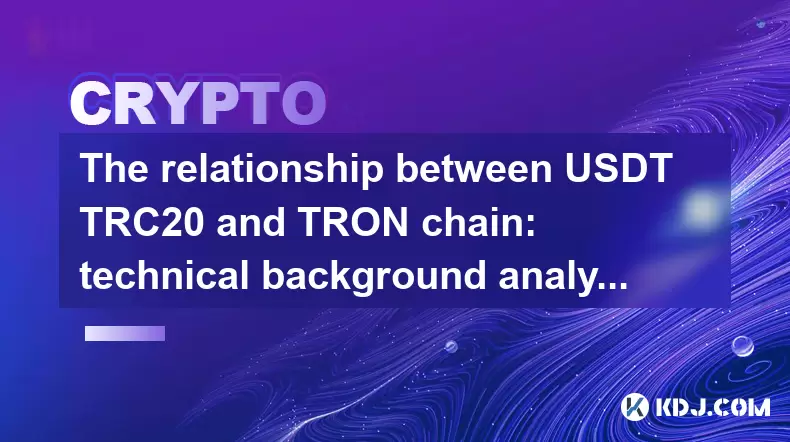
The relationship between USDT TRC20 and TRON chain: technical background analysis
Jun 12,2025 at 01:28pm
What is USDT TRC20?USDT TRC20 refers to the Tether (USDT) token issued on the TRON blockchain using the TRC-20 standard. Unlike the more commonly known ERC-20 version of USDT (which runs on Ethereum), the TRC-20 variant leverages the TRON network's infrastructure for faster and cheaper transactions. The emergence of this version came as part of Tether’s...

How to customize USDT TRC20 mining fees? Flexible adjustment tutorial
Jun 13,2025 at 01:42am
Understanding USDT TRC20 Mining FeesMining fees on the TRON (TRC20) network are essential for processing transactions. Unlike Bitcoin or Ethereum, where miners directly validate transactions, TRON uses a delegated proof-of-stake (DPoS) mechanism. However, users still need to pay bandwidth and energy fees, which are collectively referred to as 'mining fe...

USDT TRC20 transaction is stuck? Solution summary
Jun 14,2025 at 11:15pm
Understanding USDT TRC20 TransactionsWhen users mention that a USDT TRC20 transaction is stuck, they typically refer to a situation where the transfer of Tether (USDT) on the TRON blockchain has not been confirmed for an extended period. This issue may arise due to various reasons such as network congestion, insufficient transaction fees, or wallet-rela...

How to cancel USDT TRC20 unconfirmed transactions? Operation guide
Jun 13,2025 at 11:01pm
Understanding USDT TRC20 Unconfirmed TransactionsWhen dealing with USDT TRC20 transactions, it’s crucial to understand what an unconfirmed transaction means. An unconfirmed transaction is one that has been broadcasted to the blockchain network but hasn’t yet been included in a block. This typically occurs due to low transaction fees or network congestio...

How to check USDT TRC20 balance? Introduction to multiple query methods
Jun 21,2025 at 02:42am
Understanding USDT TRC20 and Its ImportanceUSDT (Tether) is one of the most widely used stablecoins in the cryptocurrency market. It exists on multiple blockchain networks, including TRC20, which operates on the Tron (TRX) network. Checking your USDT TRC20 balance accurately is crucial for users who hold or transact with this asset. Whether you're sendi...

What to do if USDT TRC20 transfers are congested? Speed up trading skills
Jun 13,2025 at 09:56am
Understanding USDT TRC20 Transfer CongestionWhen transferring USDT TRC20, users may occasionally experience delays or congestion. This typically occurs due to network overload on the TRON blockchain, which hosts the TRC20 version of Tether. Unlike the ERC20 variant (which runs on Ethereum), TRC20 transactions are generally faster and cheaper, but during...

The relationship between USDT TRC20 and TRON chain: technical background analysis
Jun 12,2025 at 01:28pm
What is USDT TRC20?USDT TRC20 refers to the Tether (USDT) token issued on the TRON blockchain using the TRC-20 standard. Unlike the more commonly known ERC-20 version of USDT (which runs on Ethereum), the TRC-20 variant leverages the TRON network's infrastructure for faster and cheaper transactions. The emergence of this version came as part of Tether’s...
See all articles























